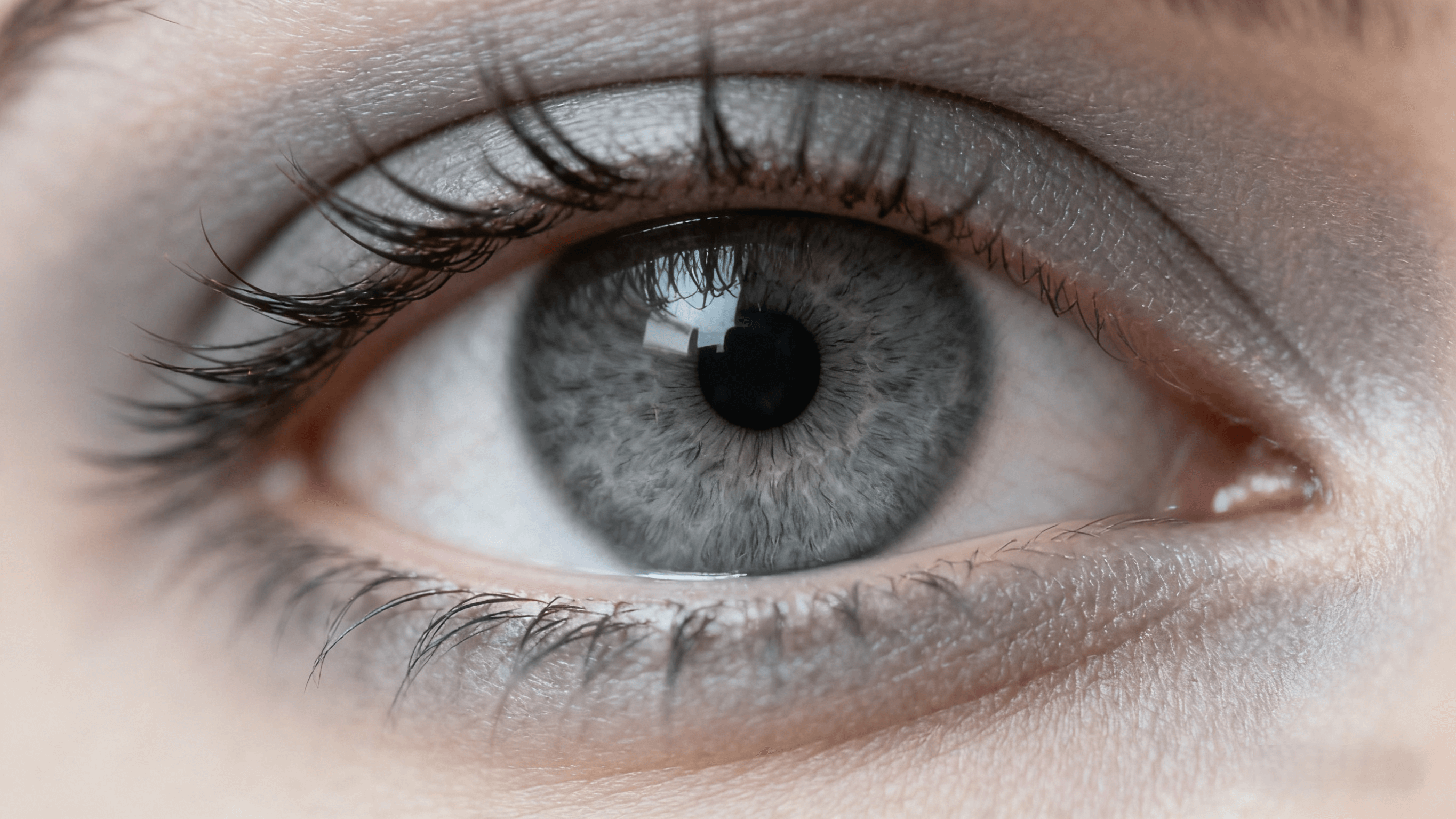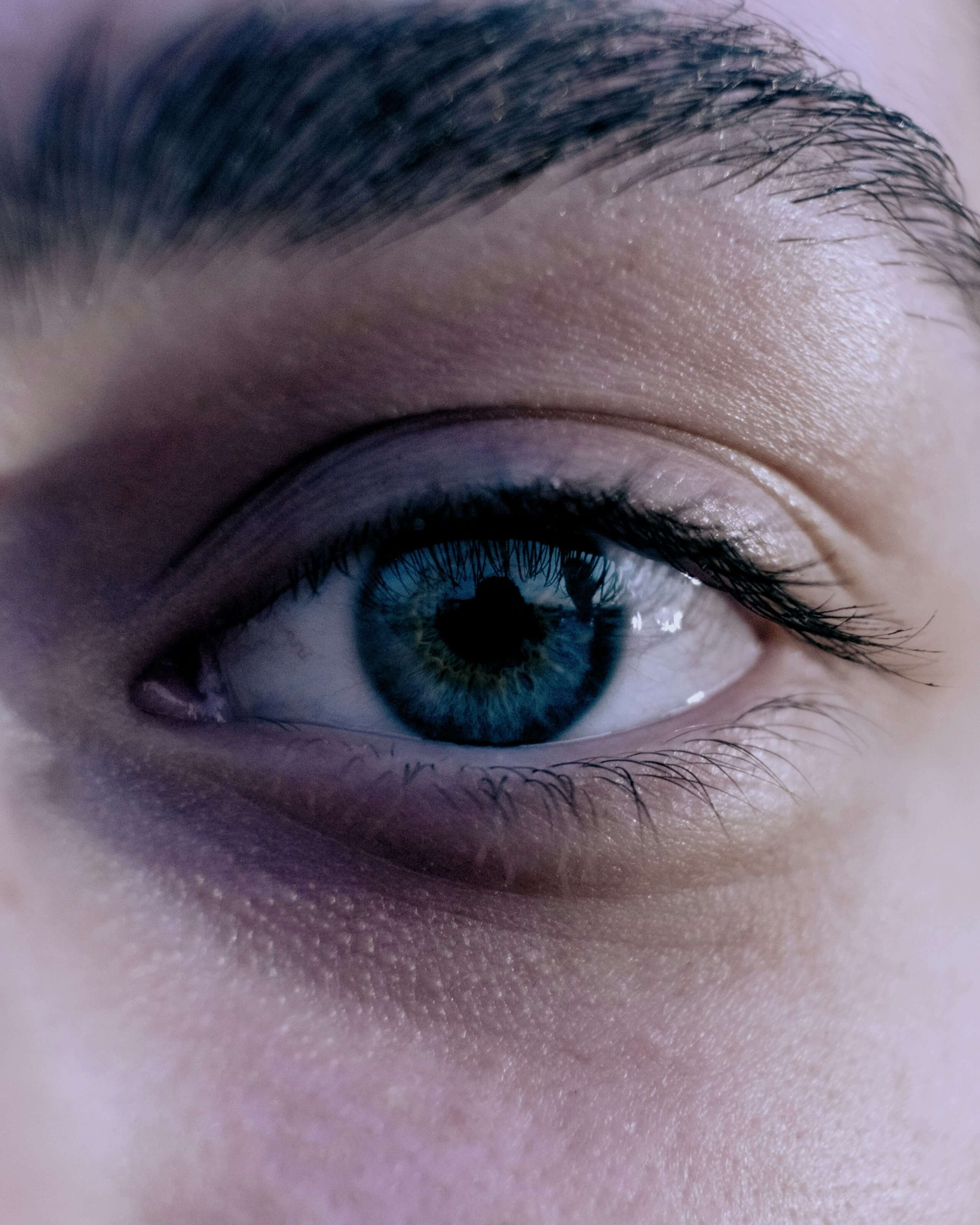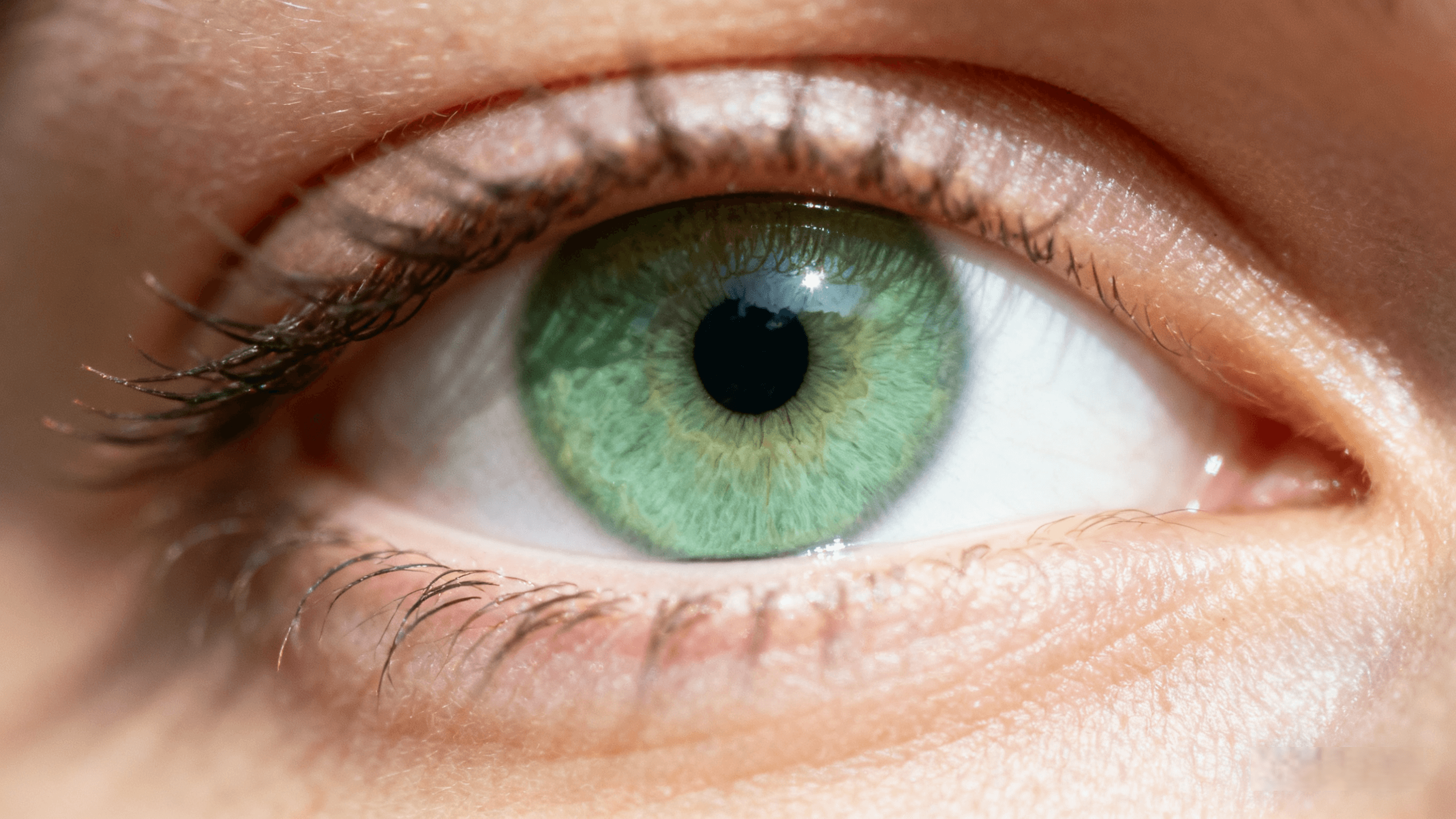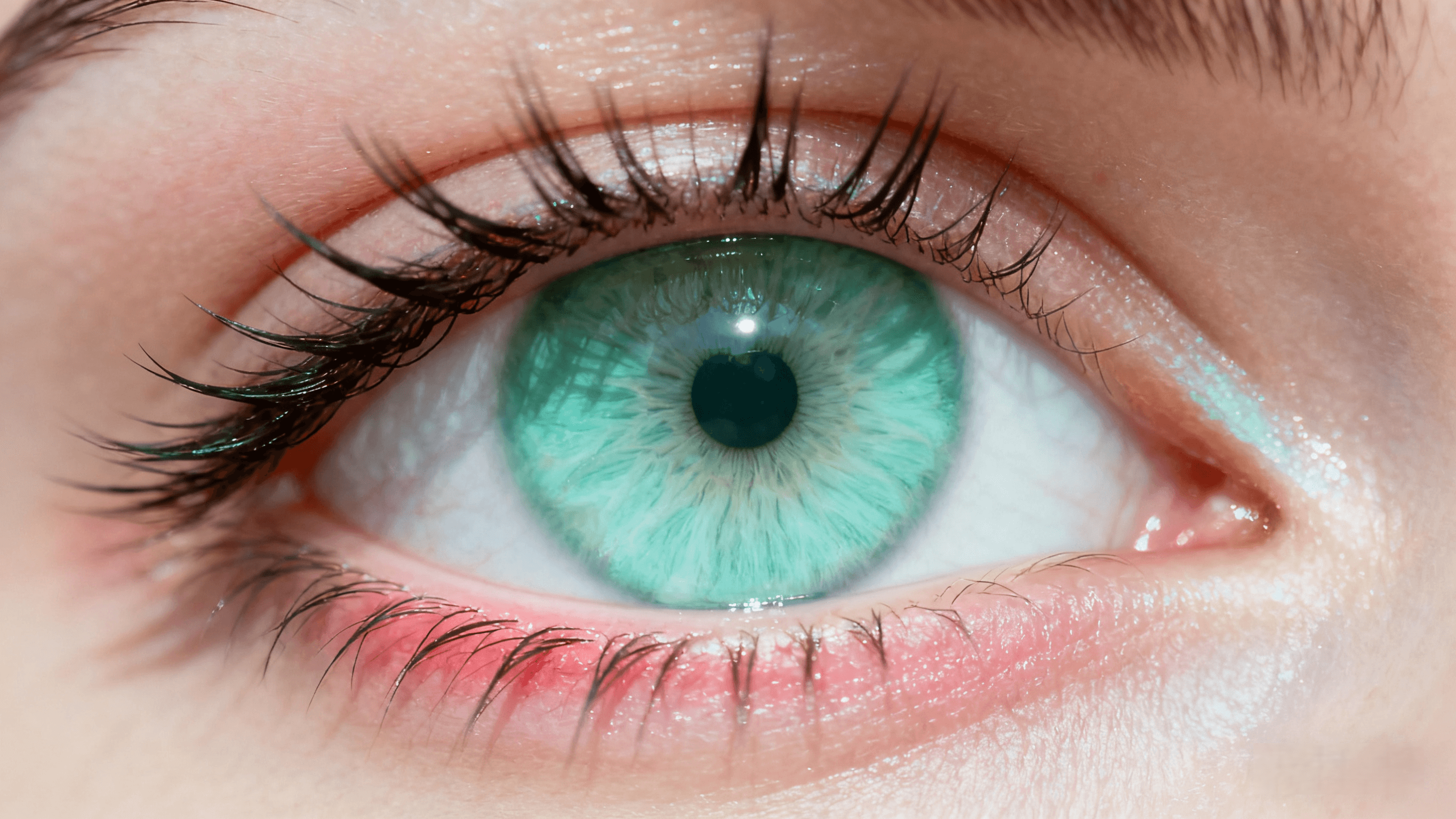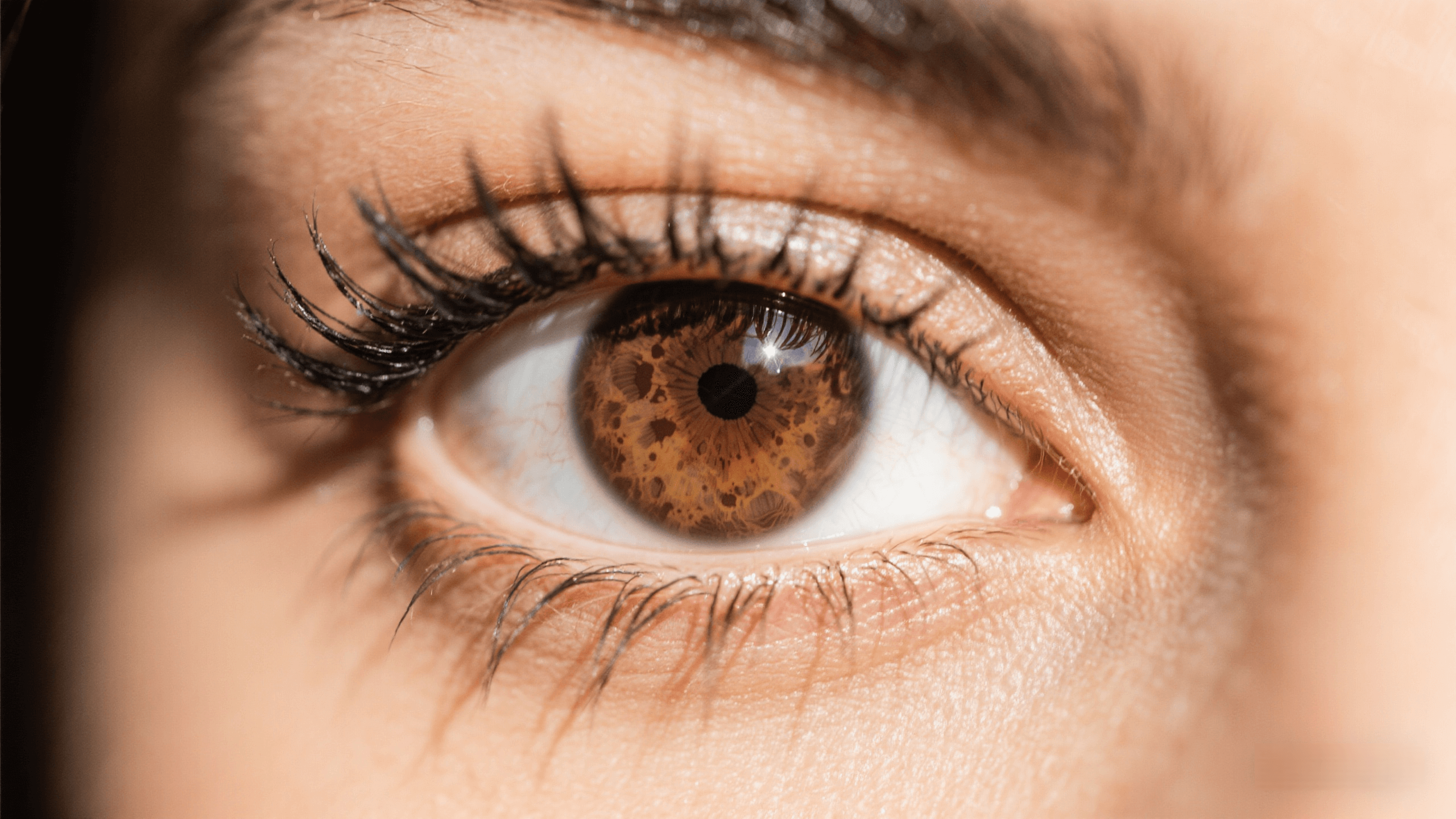
Blue-green eyes are a curious combination of genetics and optics. The formation of this rare hue depends on the interaction of the amount of melanin in the iris, the scattering effect of collagen fibers, and the ambient light. This article will explain the science and explore why this eye color is so eye-catching.
What are the colors for blue-green eyes?
Blue-green eyes are eye colors that are a mixture of blue and green tones in the iris. In appearance, it is variable, and the color may be blue or green in different lights, environments, or moods, presenting a fluid visual effect. The blue and green areas inside the iris may be mixed in spots, stripes, or rings, which are rich in layers and depth. Sometimes, there is also “central heterochromia”; the color near the pupil is different from the outer blue-green area. The edge of the iris may also have a darker color or halo, adding complexity and beauty.
The science of blue-green Eyes
Pigment composition
- Eye color is primarily determined by the amount of melanin in the iris. The more melanin there is, the darker the eye color.
- Blue-green eyes usually have a moderate to low amount of melanin in their irises.
Rayleigh scattering
- This is the main reason for the blue color in blue and blue-green eyes. When light enters the iris, the melanocytes (the matrix in the stroma layer) absorb some of the light.
- The collagen fibers in the stroma of the iris scatter short-wavelength blue light, just as the sky appears blue.
- If the amount of melanin in the iris is very low, most of the blue light is scattered, and the eyes appear blue.
Presence of lipochrome or pheomelanin
- The appearance of green is usually associated with lipochrome (also called pheomelanin) in the iris. Lipochrome is a yellow-toned pigment.
- When a small amount of yellow-toned lipochrome in the iris and blue light are scattered simultaneously, the two colors combine to produce a blue-green effect.
Effects of light and environment
- Blue-green eyes appear “variable” because their color results from light scattering and pigments.
- Under different lighting conditions (such as in bright sunlight, on a cloudy day, or under indoor lighting), the eyes absorb and scatter light differently, causing blue or green tones to stand out more.
- In addition, the color of the surrounding environment (such as the clothes you wear and the surrounding scenery) may also affect the perception of eye color by reflecting light.
In short, Blue-green eyes are a complex and variable color formed by the scattering of blue light caused by a small amount of melanin in the iris, combined with a small amount of yellow lipid pigments.
Rarity and Geographic Distribution of Blue-Green Eyes
Rarity
Blue-green eyes are a scarce iris color, with less than 3% of the world’s population having them. It is a natural fusion of blue and green eyes, and forming this eye color requires the synergy of multiple genes, coupled with a lower melanin content and specific light scattering conditions. This complex genetic mechanism makes blue-green eyes much rarer than ordinary brown or blue, making it one of the most eye-catching eye colors in the world.
Geographical distribution
Blue-green eyes are mainly concentrated in Europe, especially in Nordic countries such as Iceland, Finland, and Sweden, as well as Central and Eastern European countries such as Germany, Poland, and Ukraine. This eye color can also be found more frequently in areas with strong Celtic ancestry, such as Ireland and Scotland. Blue-green eyes occasionally appear among the descendants of immigrants in North America and Australia. Still, the proportion is lower, and it is a rare variant in genetic inheritance.
Psychological impression of blue-green eyes
Mystery and attraction
- Blue-green eyes are mysterious because of their changing nature between blue and green. This uncertainty and variability make people curious and fascinated, as if an unknown story exists behind them.
- Their rarity also adds to the attraction, making the owner unique and eye-catching.
Profundity and wisdom
- Blue symbolizes calmness, depth, and wisdom, while green represents nature, vitality, and insight. When these two colors are combined, blue-green eyes are often associated with the owner’s profound thinking ability, calm judgment, and insight into the essence of things.
Uniqueness and artistic temperament
- This uncommon eye color may also be associated with a unique personality, creativity, and artistic temperament. People with blue-green eyes may have eclectic and imaginative characteristics.
The difference between blue-green eyes and normal blue eyes
Pigment composition
- Normal blue eyes: The melanin content in the iris is extremely low. The blue color is not produced by blue pigment, but because the collagen fibers in the iris matrix scatter short-wavelength blue light (Rayleigh scattering) and absorb less light, making the eyes appear blue.
- Blue-green eyes: Besides scattering blue light, the iris also contains a small amount of yellow-toned lipochrome (lipochrome/pheomelanin). These yellow pigments mixed with scattered blue light produce the blue-green effect.
Color stability and variability
- Normal blue eyes: The color is relatively more stable. Although the depth will change under different lights, its blue tone is usually purer and consistent.
- Blue-green eyes: The most prominent feature is variability. Due to the mixture of blue scattering and yellow pigments, its color will be affected by light conditions and the colors of the surrounding environment. Even personal emotions and clothing, changing back and forth between blue and green, sometimes appearing bluer, sometimes greener, present a flowing and unfixed visual effect.
Visual effect and depth
- Normal blue eyes: Often give people a clear, bright, pure feeling.
- Blue-green eyes: Visually more layered and deep. Due to the interweaving of blue and green tones, there may be spots, stripes, or rings of color distribution inside the iris, making it look more complex and fascinating. Sometimes it is accompanied by “central heterochromia”, a circle of different colors (such as brown or amber) around the pupil.
Makeup choices for blue-green eyes
Eyeshadow color choices
- Brown: Various shades of warm brown, reddish brown, golden brown, and coffee are excellent choices for blue-green eyes. They contrast with the green tones in the eyes, making them stand out and warmer.
- Bronze/gold: Metallic bronze and gold can bring a sense of shine and form a strong contrast with the color of the eyes, especially in the sun, making blue-green eyes appear brighter and more prosperous.
- Taupe/smoky gray: Soft or smoky gray can bring out the blue component in the eyes, creating a deep and calm atmosphere.
Matching eyeliner and mascara
- Black eyeliner/mascara: Classic black can provide the strongest contrast, making the eye outline clearer and the color more prominent.
- Brown eyeliner/mascara: Soft brown and mascara can bring a more natural makeup effect, especially suitable for daily use or creating a gentle feeling.
Lip makeup and blush
- Lip color: Nude, bean paste, and peach are safe and beautiful choices. If you want to be more eye-catching, you can choose a bright lipstick that contrasts with the eye makeup, but maintain the overall harmony.
- Blush: Pink or natural apricot blush can bring a good complexion and coordinate with the eye makeup.
Blue-green eyes are a unique gift from nature, full of mystery and variety. Whether you were born with this color or aspire to experience it, WooEye contact lenses offer a wide range of lenses that accurately replicate their natural gradient. Discover WooEye and let your eyes be as blue-green as possible.

